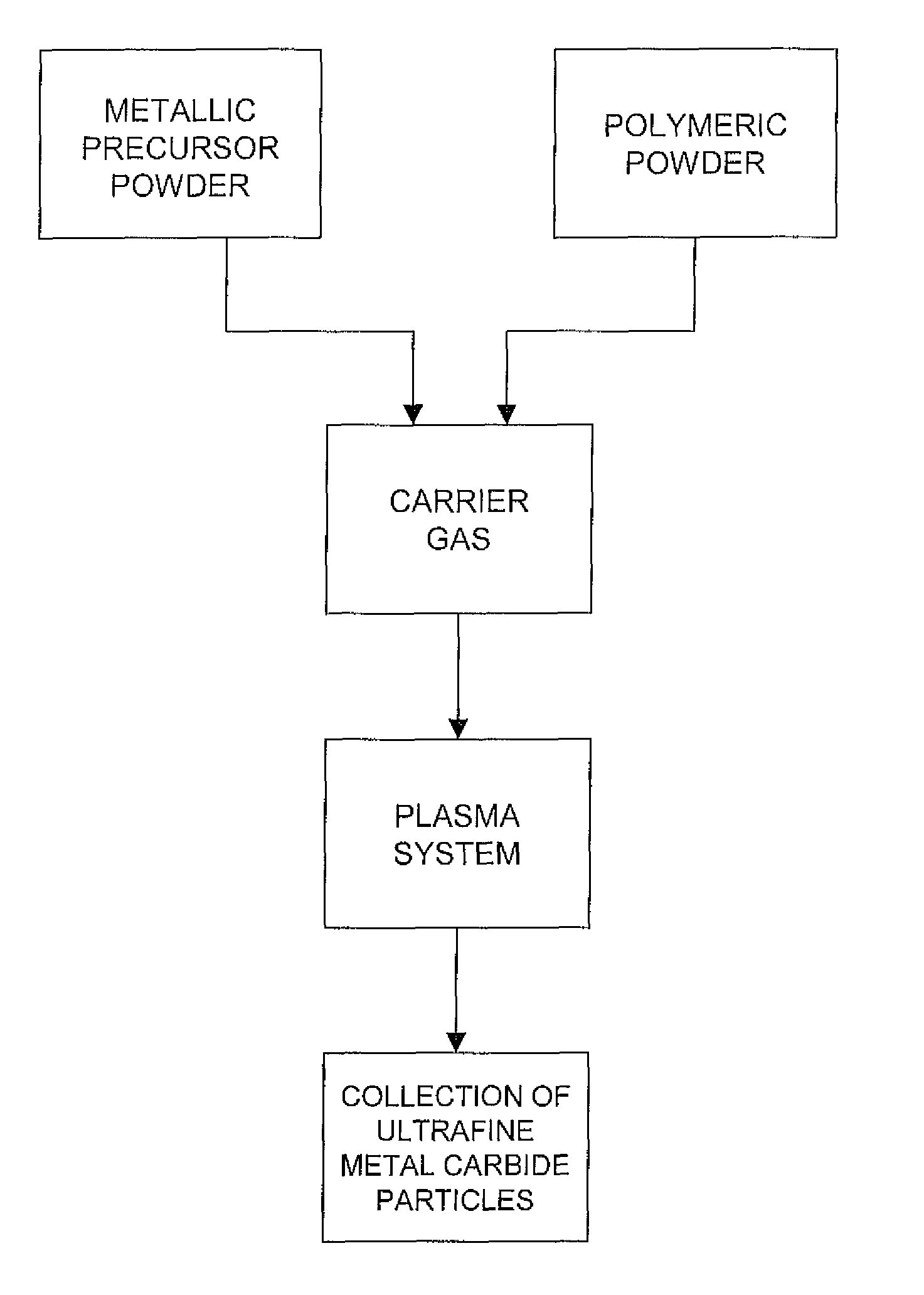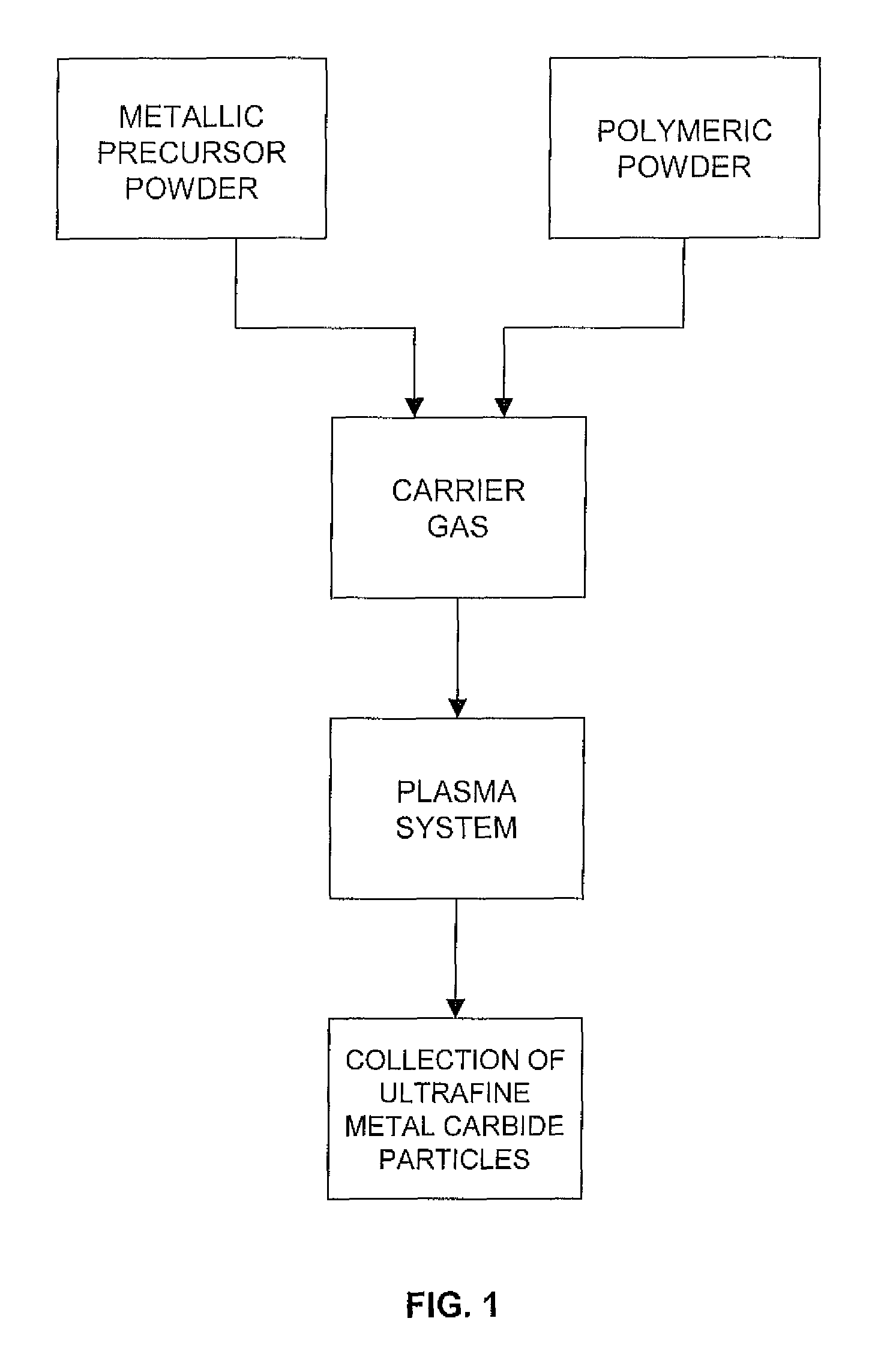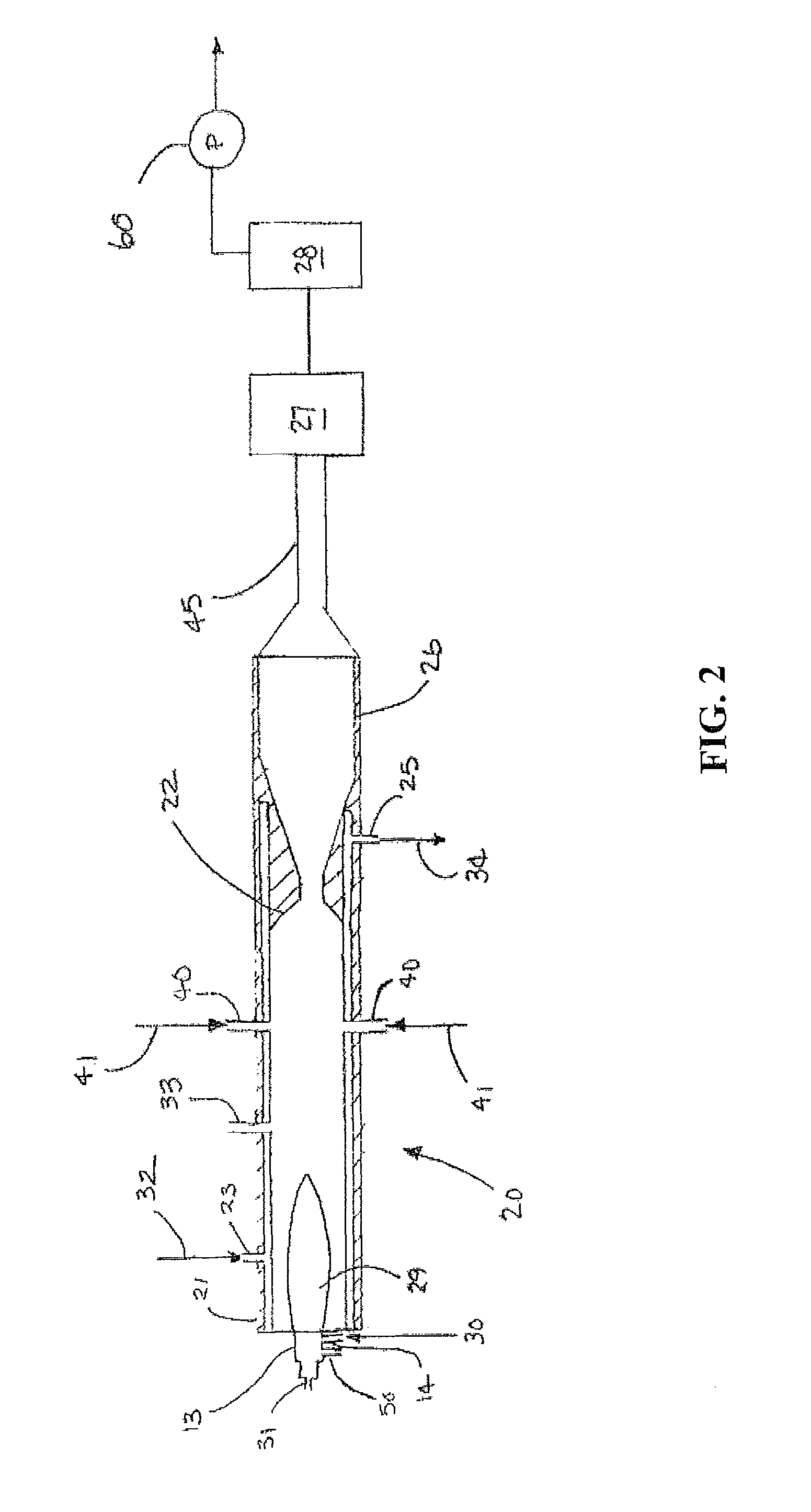Production of ultrafine metal carbide particles utilizing polymeric feed materials
a technology of metal carbide particles and polymer feed materials, applied in chemical/physical/physical-chemical processes, plasma techniques, chemical/physical processes, etc., can solve the problem of relatively high processing cos
- Summary
- Abstract
- Description
- Claims
- Application Information
AI Technical Summary
Benefits of technology
Problems solved by technology
Method used
Image
Examples
example 1
[0055]Particles from solid precursors were prepared using a DC thermal plasma reactor system similar to that shown in FIG. 2. The main reactor system included a DC plasma torch (Model SG-100 Plasma Spray Gun commercially available from Praxair Technology, Inc., Danbury, Conn.) operated with 60 standard liters per minute of argon carrier gas and 25 kilowatts of power delivered to the torch. A uniform mixture of 143 grams precipitated silica (WB-10 grade, available from PPG Industries) for every 100 grams of polypropylene powder (35 um Chromatographic grade, available from Polysciences, Inc, Warrington, Pa.) was prepared as feed material. The solid reactant was fed to the reactor at a rate of 2 grams per minute through a gas assistant powder feeder (Model 1264, commercially available from Praxair Technology, Inc., Danbury, Conn.) located at the plasma torch outlet. At the powder feeder, about 3.1 standard liters per minute argon were used as carrier gas. Argon gas at 5 standard liters...
example 2
[0057]Particles from silica solid reactant was prepared using the same apparatus and with operating conditions listed in Example 1, except that the plasma power is 16 kilowatts of power delivered to the torch.
[0058]The measured B.E.T. specific surface area of the produced material was 115 square meters per gram using a Gemini model 2360 analyzer (available from Micromeritics Instrument Corp., Norcross, Ga.), and the calculated equivalent spherical diameter was 19 nanometers. FIG. 5 is an X-ray diffraction spectrum of the produced particles measured using an X-ray diffractometer (Philips X' Pert MPD model). The analysis indicated that the powder comprised crystalline silicon carbide and some amorphous silica.
example 3
[0059]Particles from silica solid reactant was prepared using the same apparatus and with operating conditions listed in Example 1, except that the DC plasma torch is operated with 90 standard liters per minute of argon carrier gas.
[0060]The measured B.E.T. specific surface area of the produced material was 109 square meters per gram using a Gemini model 2360 analyzer (available from Micromeritics Instrument Corp., Norcross, Ga.), and the calculated equivalent spherical diameter was 20 nanometers. FIG. 6 is an X-ray diffraction spectrum of the produced particles measured using an X-ray diffractometer (Philips X' Pert MPD model). The analysis indicated that the powder comprised crystalline silicon carbide and some amorphous silica.
PUM
| Property | Measurement | Unit |
|---|---|---|
| particle size | aaaaa | aaaaa |
| particle size | aaaaa | aaaaa |
| particle size | aaaaa | aaaaa |
Abstract
Description
Claims
Application Information
 Login to View More
Login to View More - R&D
- Intellectual Property
- Life Sciences
- Materials
- Tech Scout
- Unparalleled Data Quality
- Higher Quality Content
- 60% Fewer Hallucinations
Browse by: Latest US Patents, China's latest patents, Technical Efficacy Thesaurus, Application Domain, Technology Topic, Popular Technical Reports.
© 2025 PatSnap. All rights reserved.Legal|Privacy policy|Modern Slavery Act Transparency Statement|Sitemap|About US| Contact US: help@patsnap.com



